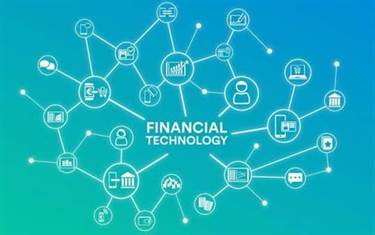Без рубрики
SDLC Models: Agile, Waterfall, V-Shaped, Iterative, Spiral
SDLC or the Software Development Life Cycle is a process that produces software with the highest quality and lowest cost in the shortest time possible. SDLC provides a well-structured flow of phases that help an organization to quickly produce high-quality software which is well-tested and ready for production use. The design stage takes as its input the requirements already defined. This step involves decomposing the system into pieces, analyzing project goals, breaking down what needs to be created, and engaging users to define requirements. Relevant questions include whether the newly implemented system meets requirements and achieves project goals, whether the system is usable, reliable/available, properly scaled and fault-tolerant. Process checks include review of timelines and expenses, as well as user acceptance.
Knowing the structure and nuances of each model can help to pick the one that best fits your project. The Spiral model best fits large projects where the risk of issues arising is high. Changes are passed through the different SDLC phases again and again in a so-called “spiral” motion. The last but not least important stage of the SDLC process is the maintenance stage, where the software is already being used by end-users. The testing stage ensures the application’s features work correctly and coherently and fulfill user objectives and expectations.
Planning
Proper system design ensures that the developed system aligns with the desired functionality, performance, and scalability requirements. In SDLC, documentation is crucial, regardless of the type of model chosen for any application, and is usually done in parallel with the development process. Some methods work better for specific kinds of projects, but in the final analysis, the most crucial factor for the success of a project may be how closely the particular plan was followed. In order to understand the concept of system development life cycle, we must first define a system.
It empowers you to speed up the development process, cut costs, leverage the full creative capacity of your team, and more. Rapid Application Development, or RAD, is a variation of the waterfall approach. The RAD model is based upon the idea that a faster system can be developed by using focus groups to gather system needs. When choosing a software development methodology, there are several significant distinctions to consider.
Phase 6: implementation
XP also implies that the code is shared between all team members, so everyone can give suggestions and look at it from the other angle. Let’s clear the terms in a few words, so there’s no misconception. Verification and validation mean different things, though they seem pretty similar.

Baselines[clarification needed] are established after four of the five phases of the SDLC, and are critical to the iterative nature of the model.[21] Baselines become milestones. Once a system has been stabilized through testing, SDLC ensures that proper training is prepared and performed before transitioning the system to support staff and end users. Training usually covers operational training for support staff as well as end-user training. It may also be helpful to choose your first software language to learn.
Maintenance
When it’s time to choose the software development approach, there’s a strong chance of getting confused over numerous options. However, if you learn a little about each, it all starts shaping up. Each software development methodology has some significant distinctions that you may proceed from. In addition, it’s usually project or delivery managers who are in charge of choosing the right approach. Their knowledge of the peculiarities of each methodology noticeably facilitates the task.

A sequential model is a sequential development method in which the software is developed in a series of well-defined phases with each phase being completed before the next phase starts. Also known as the deployment phase, the implementation phase occurs right after the successful testing of the software product. It is focused on delivering the software to the end-user or installing it onto the customer’s system(s). Once all the requirements are known, it’s time to analyze them for feasibility and validity. The team decides whether it will be possible to add the requirements to the software. This serves as the guide for carrying out the next phase of the SDLC.
Systems Analysis & Design (SAD)
This will prevent them from overdrawing funding or resources when working at the same place as other development teams. Methodologies eliminate the need to invent new management and development techniques. Also, they provide https://www.globalcloudteam.com/ every team member with a clearly defined plan so that everyone understands what they’re doing, why, and what’s the final goal. People consider Scrum and Extreme programming the two different implementations of Agile.
- Though inspired by the Waterfall model, where the testing is done at the end of the project, it differs in that it introduces testing at every stage of development.
- Daily Scrum meetings help the whole team monitor progress throughout the project.
- For example, the development of a new mobile app for a restaurant would be an appropriate project to use the RAD Model.
- Once the code is fully developed, testing is carried out against the requirements.
- All bugs and enhancements are then reported to the developer team working on the project.
The waterfall model is very popular, and many software projects are built using it, but it is not a very good choice if we want to test the software efficiently, why? Because one of the seven testing principles is “Early testing saves time and money”, and in the waterfall model, testing is not early at all. During the evolution of SDLC, different models emerged from the basic waterfall methodology to meet various requirements and expectations. There is no all-purpose model that works well for all projects, conditions, and cost requirements.
Basic 6 SDLC Methodologies
Each model has a unique set of actions that ensure the development process’s success. We hope this article sheds more light on various SDLC models available. Instead of beginning with complete knowledge of requirements, project development teams following the iterative methodology implement a set of software requirements. Subsequently, they test, evaluate, and identify further requirements. System Design is a crucial stage in the SDLC as it bridges the gap between requirements analysis and system development. It transforms user needs and functional specifications into a detailed technical plan that guides the development team.

With this methodology, we finish one phase and then start the next. Each phase has its own mini-plan and each phase “waterfalls” into the next. The biggest drawback of this model is that small details left incomplete types of system development life cycle can hold up the entire process. It’s also important to know that there is a strong focus on the testing phase. As the SDLC is a repetitive methodology, you have to ensure code quality at every cycle.
SOFTWARE DEVELOPMENT LIFE CYCLE: PHASES
This demand can be primarily linked to the agile model’s flexibility and core principles. By its core principles, we mean adaptability, customer involvement, lean development, teamwork, time, sustainability, and testing, with its two primary elements being teamwork and time (faster delivery). So rather than creating a timeline for the project, agile breaks the project into individual deliverable ‘time-boxed’ pieces called sprints.
